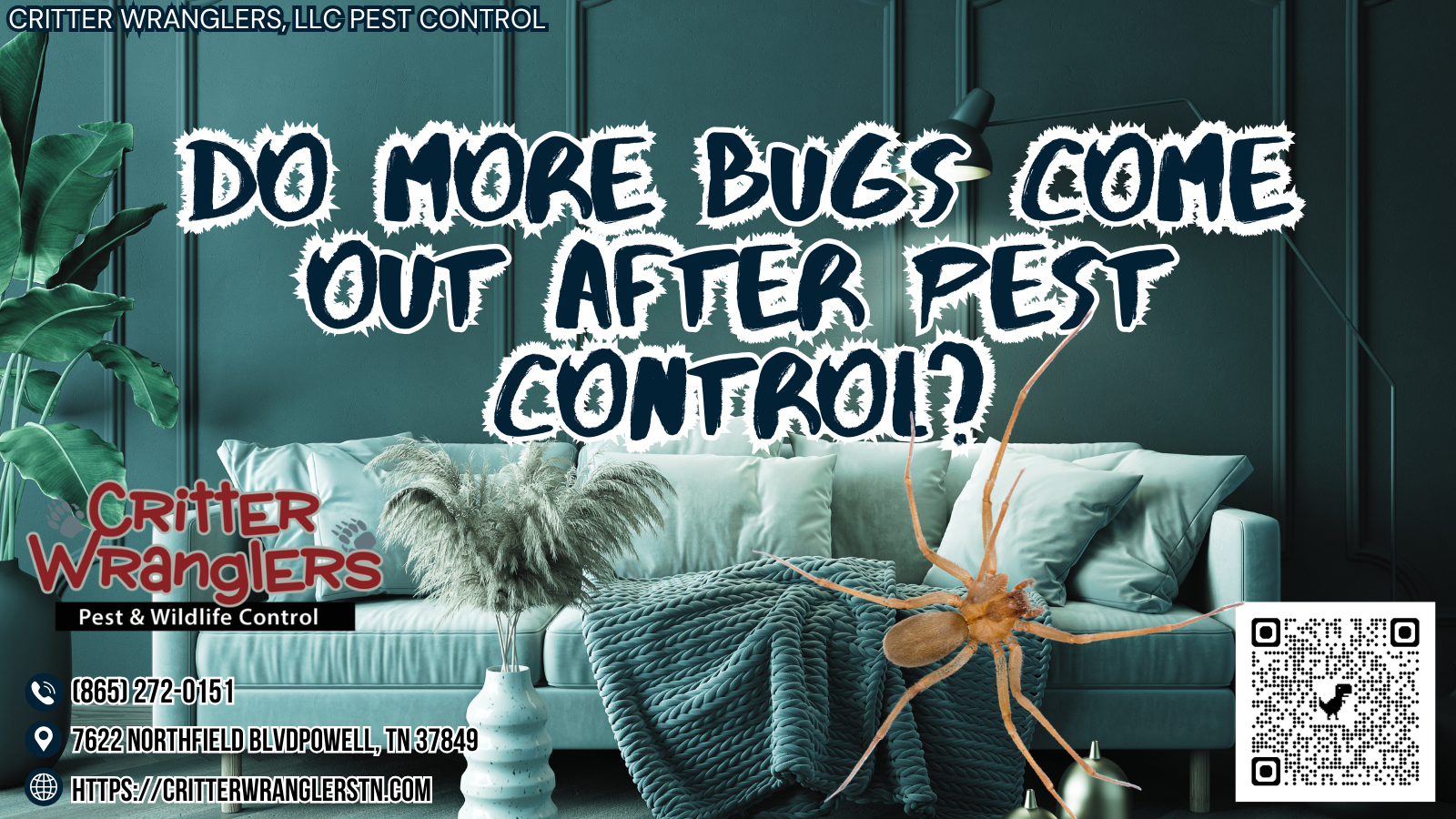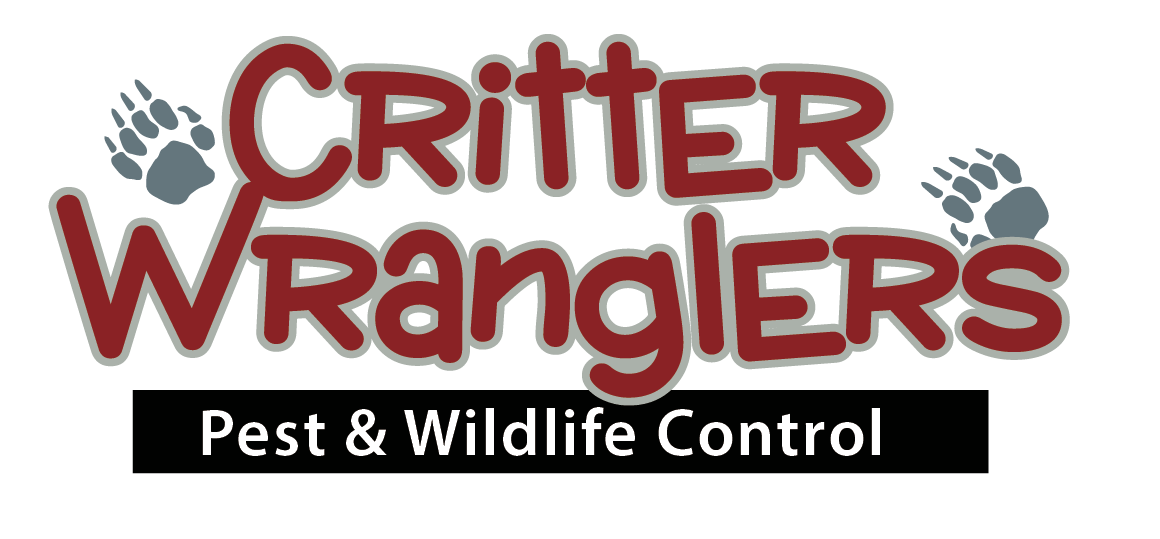Critter Wranglers, LLC Blog
Have an issue? Contact us today

Do More Bugs Come Out After Pest Control?
Yes, more bugs may appear after pest control treatment. This can happen due to several reasons. Following treatment, pests might become more visible as they react to changes in their environment. You may also notice them more because they are seeking shelter or food. Seasonal patterns and temperature shifts can influence bug activity levels. It is normal for some insects to emerge shortly after treatment. Clear communication with your pest control provider can help manage your expectations during this time. For further insights on pest behavior and effective management, additional information is available.
Key Article Highlights
- Increased bug visibility post-treatment can occur as pests are disturbed and seek new shelter or food sources.
- Seasonal patterns and breeding cycles often lead to surges in pest activity, coinciding with treatment timelines.
- Environmental changes, such as temperature shifts, can prompt pests to emerge, increasing sightings after treatment.
- Effective post-treatment monitoring and communication with pest control providers are essential for understanding bug activity.
- Patience is necessary, as pest control treatments may take time to fully eliminate pests, leading to temporary increased activity.
Understanding Pest Behavior
Understanding pest behavior is essential for effective pest control. To manage pests successfully, one must consider the pest life cycle and insect behavior. Pests go through various stages, including egg, larva, pupa, and adult. Each stage presents different vulnerabilities and behaviors. For example, larvae may feed aggressively, while adults may seek shelter or reproduce. Recognizing these patterns helps in timing treatments effectively. Additionally, understanding why pests are drawn to certain environments can inform preventative measures. For instance, high moisture levels may attract specific insects. By mastering pest behavior, individuals can implement strategies that disrupt the life cycle, reduce populations, and ultimately achieve better control outcomes. This knowledge empowers homeowners and professionals alike in their pest management efforts.
Reasons for Increased Bug Activity
While pest control treatments aim to reduce insect populations, increased bug activity can occur for several reasons. One key factor is increased visibility. After treatments, insects that were previously hidden may emerge, making them more noticeable. Additionally, seasonal patterns play a significant role in bug activity. Many pests have specific breeding seasons, which can lead to a surge in sightings during certain times of the year. As temperatures rise or fall, insects may also seek shelter or food sources, prompting them to be more active. This combination of factors can create the impression that there are more bugs present, even after treatment. Understanding these reasons is essential for managing expectations after pest control services are completed.
Managing Post-Treatment Expectations
Managing post-treatment expectations is essential for homeowners after pest control services. It is common to see increased bug activity in the days following treatment. This can be distressing, but understanding the process helps. Effective post-treatment monitoring is vital. Homeowners should observe any pest activity and communicate with their pest control provider. Clear homeowner communication about what to expect can lead to better outcomes. Technicians may offer guidance on monitoring and what signs to look for. Remember, it may take time for the treatment to fully take effect. Staying informed and engaged will help homeowners feel more in control and guarantee effective pest management. Patience and proactive communication are key in this process.
Effective Long-Term Pest Control
Effective long-term pest control requires a combination of professional services and proactive homeowner involvement. One effective approach is integrated pest management (IPM), which focuses on prevention, monitoring, and control. IPM emphasizes understanding pest behavior and using targeted treatments only when necessary. Homeowners should implement preventive measures, such as sealing entry points, maintaining cleanliness, and reducing moisture levels. Regular inspections can help identify potential infestations early. Collaboration with pest control professionals guarantees that treatments align with IPM principles. By adopting these strategies, homeowners can create an environment that is less conducive to pests, leading to a significant reduction in their presence over time. This proactive approach enhances the effectiveness of pest control efforts for lasting results.
Tips for Homeowners After Treatment
After treatment, homeowners should take specific steps to ascertain the effectiveness of pest control measures. First, implement preventive measures to deter future infestations. Seal cracks and crevices, and ascertain that food is stored properly. Regular cleaning can help eliminate potential food sources for pests.
Next, conduct routine inspections of your home. Check for signs of pests, such as droppings or nests, especially in areas like basements or attics. If you notice any signs, contact your pest control professional promptly.
Additionally, avoid overwatering plants and maintain proper drainage to reduce moisture, which attracts pests. By following these tips, homeowners can enhance the results of pest treatment and create a less hospitable environment for unwanted insects.
Frequently Asked Questions
How Long Does It Take for Pest Control to Be Effective?
“Patience is a virtue.” Pest control duration varies, but treatment effectiveness often becomes noticeable within a few days to weeks. Factors such as infestation severity and type of pest can influence the overall timeline.
Can I Use My Home After Pest Control Treatment?
After pest control treatment, it’s important to follow pest control precautions. Generally, you should wait a specified time before resuming post treatment activities to guarantee safety and effectiveness of the treatment. Always consult your pest control professional.
Are There Any Side Effects From Pest Control Chemicals?
Pest control chemicals can pose health risks due to chemical exposure. Symptoms may include respiratory issues, skin irritation, or allergic reactions. It is essential to follow safety guidelines and allow adequate ventilation post-treatment to minimize risks.
Will Pets Be Safe After Pest Control Treatment?
Pet safety is vital after pest control treatment. To minimize chemical exposure, make certain pets are kept away from treated areas until solutions dry, and always follow the pest control company’s recommended guidelines for safe reentry.
How Often Should I Schedule Pest Control Treatments?
Scheduling pest control treatments involves understanding pest frequency and treatment intervals. For best results, consider quarterly treatments for ongoing issues or biannual applications for preventative measures, ensuring a pest-free environment throughout the year.
